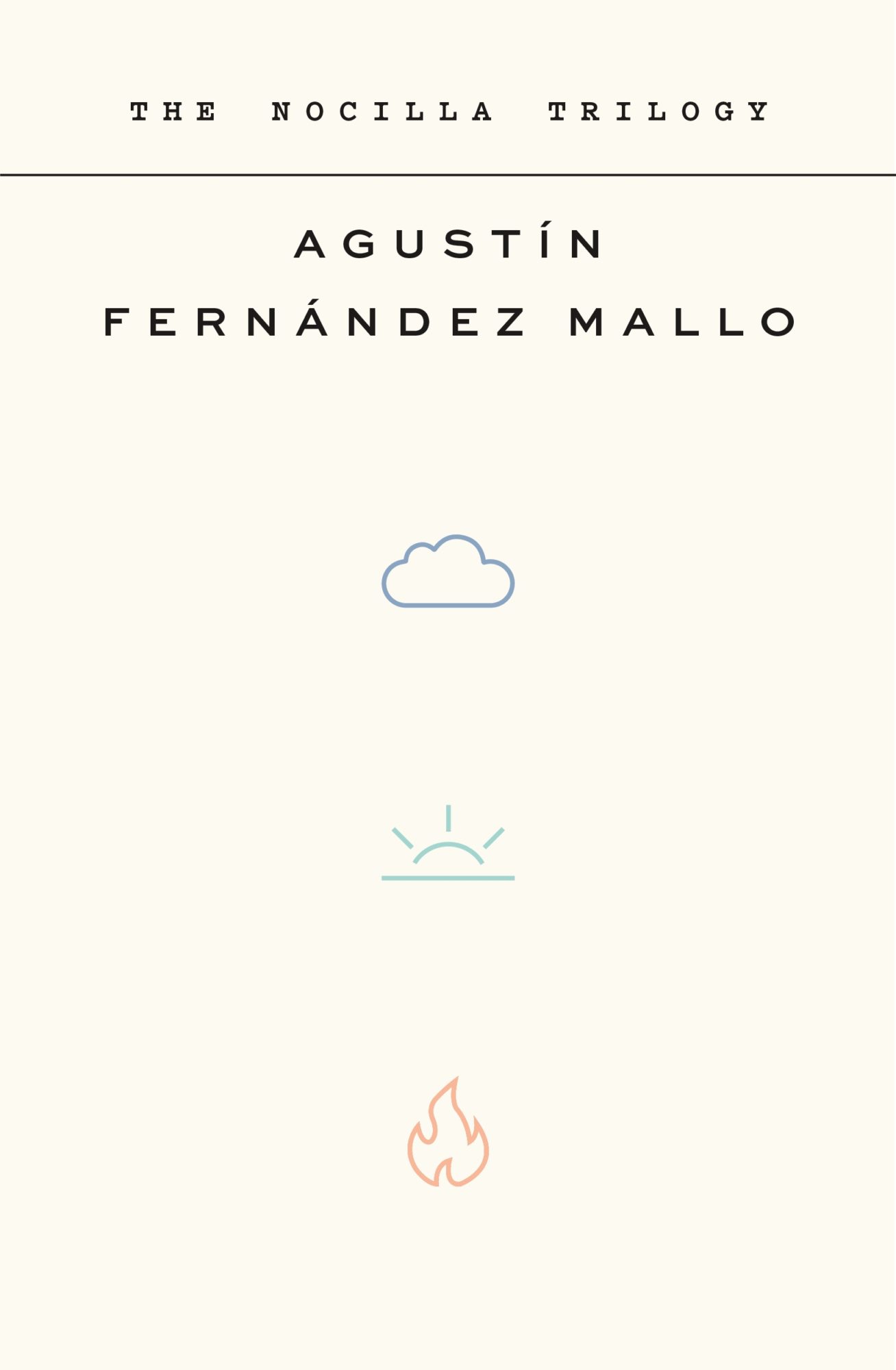Eschatology on the Internet: The Nocilla Trilogy
Agustín Fernández Mallo, The Nocila Trilogy, 2019, published by Farrar, Straus and Giroux.
Share:
In 2010 scientists from Hokkaido University in Sapporo, Japan, conducted an experiment with oat flakes, arranged to mimic the cities and suburbs of Tokyo, to which the researchers introduced a brainless, single-celled slime mold to learn if they could find an efficient, decentralized control model for the area’s transit system. The slime mold revealed to the scientists that the current metropolitan Tokyo map was, in fact, suitably efficient. The experiment suggested, however, that there were new ways of planning transit lines, mobile communication networks, computer systems, and other forms of information distribution.
Reading Agustín Fernández Mallo’s The Nocilla Trilogy—Nocilla Dream, Nocilla Experience, and Nocilla Lab—feels like this organic, selfless efficiency in information. Originally released in Spanish from 2006 to 2009 by a small publishing house, Mallo’s trilogy grew into such a powerful force in Spain that Nocilla became the generational marker for a certain subset of Spanish writers born in the waning years of Francoism. Mallo himself is a picture of a character straight from the Internet—a punker turned physicist, glasses, cigarette, writing poetry in his spare time, won’t show up to his own party—who wrote the first parts of Nocilla while bedridden with a serious hip injury in Chiang Mai, Thailand.
Nocilla is a sprawling and utterly uncategorizable work in which one finds a moment of everything. The Bomb, surfers, poetry, morning sex, outsider art, hitchhiking, Borges, the legal noplaceness of airports, the strange discoveries one makes out in the desert alone at night, farming, mathematical equations, Thelonious Monk, Las Vegas, the script to The Texas Chainsaw Massacre, diamonds, the ex-wife, cults—and all that just in the first book. Such dizzying amounts of information should be overwhelming or jarring. It is anything but. There is a rhythmic, smooth softness to Nocilla, a simplicity and ease in which we are directed from the Sex Pistols to Richard Feynman, which is due in no small part to Thomas Bunstead’s meticulous translation. Some of this information feels like a reminder, like we’ve heard it all before, but in Nocilla it all serves a purpose. It tells us that we are moving toward something, that the chaos of our lives in the digital information age means something, that we are collecting this information for a purpose, that if we just somehow put it in the right order, we would be able to see the pattern, the direction, that we could know what the slime mold knows.
Agustín Fernández Mallo, The Nocila Trilogy, 2019, published by Farrar, Straus and Giroux.
Nocilla Dream, the first book in the series, is the most intoxicating. The 113 vignettes that make up Dream range in length from a few sentences to a few pages, but nothing is ever long enough to get too lost in, nothing pulls you too far from the stream. Most of the small narratives take place in the United States, in the American West and Southwest—Las Vegas, Utah, all forms of deserts—and each story encompasses the shimmering uncertainty of heat-filled moments. Was she really there that night? Did we miss it? A tree on the side of a road collects shoes. A prostitute waits for a promised lover somewhere outside Las Vegas. A suitcase, filled with photographs, lies dumped on the highway. A man loses faith in Jorge Luis Borges. On their own, these passages could become existentially dreadful, but we’re kept in motion by quiet physics calculations, explanations of motherboards, and microstates.
If Nocilla Dream is held together with hallucinatory landscapes, isolated people, and physics equations, Nocilla Experience takes us through the next installment of what increasingly feels like a digital eschatology with alternative music, buildings, and Apocalypse Now. The pace quickens, the people living through Experience and Lab move faster, everything seems frighteningly more real and more absurd. A man named Ernesto living in a Brooklyn walk-up filled with farm animals works on his entry for an architecture prize—a suicide building to save New York time and money, a grotesque early stirring for the millennial aesthetic of efficiency, hustle, and suicidal ideation. Two Russian boys swallow radioactive pills after crawling through oil pipes and exploring buildings, a body is found in a lake, a man wonders if data can be made into tangible muscle, and Bobby Gillespie from Primal Scream thinks he’s still a punk. Is this how the world ends?
The slime mold pattern becomes clearer: the Nocilla Trilogy is a portrait of what boredom means, what punk looks like in poetry and technology, what sort of dreams we are having, the banal and ecclesial connections we are making in art and life, in the digital age. It’s the horror we’ve known to be true all along: we are alone, we are subject to forces outside our control, our new digital connectedness doesn’t mean we are emotionally connected in a meaningful way, we are having the same dreams and same fears under capitalism, we are closer to knowing more than we could ever want to know about the possibilities of our race—and yet it is just as brainless and voracious as the slime mold, growing efficiently, forever expanding.
*Translated from Spanish by Thomas Bunstead; Farrar, Straus and Giroux
Jasmine Amussen is a writer living in Atlanta. She enjoys Angela Carter, Bun B, and French 75s with cognac. @snakemoons.
